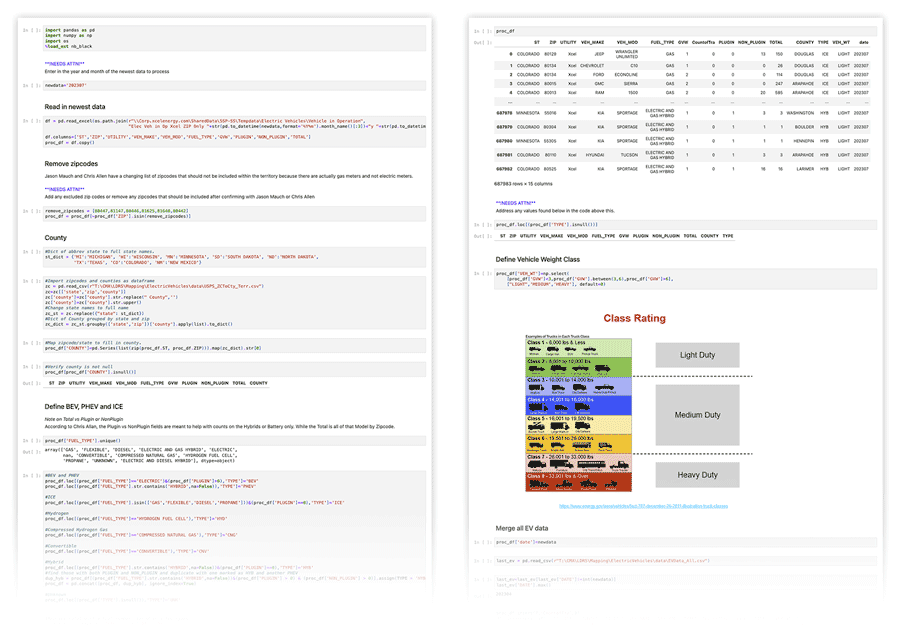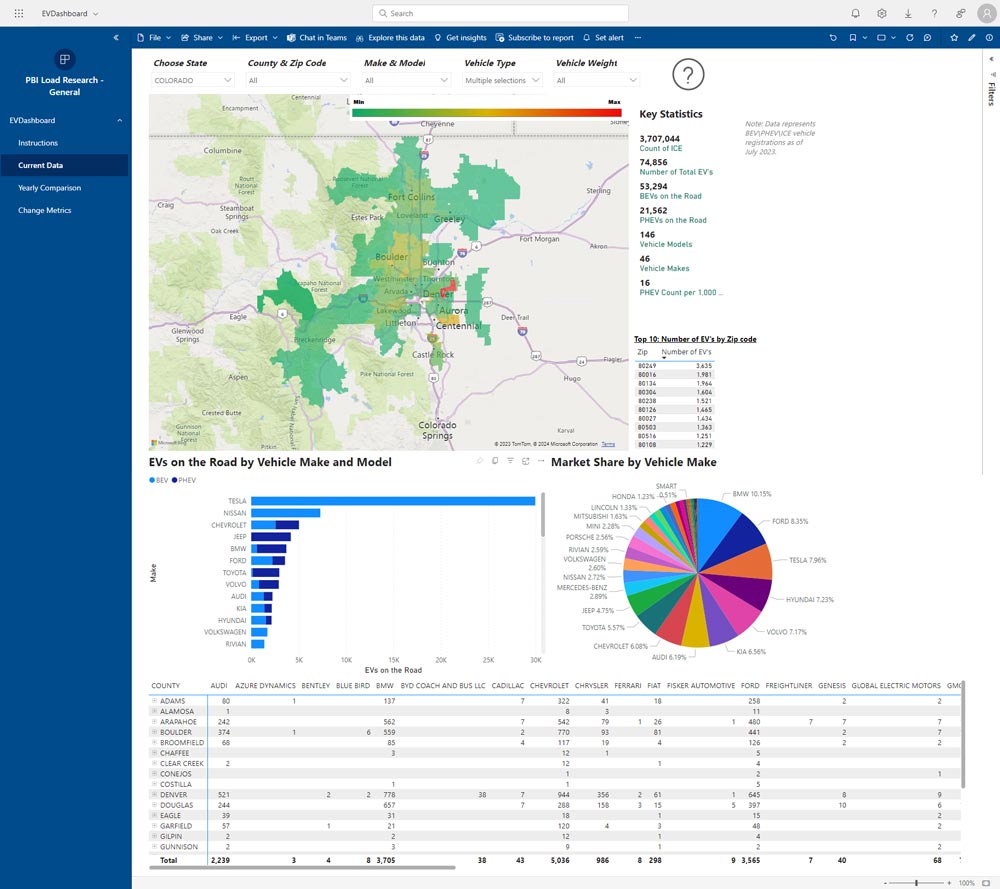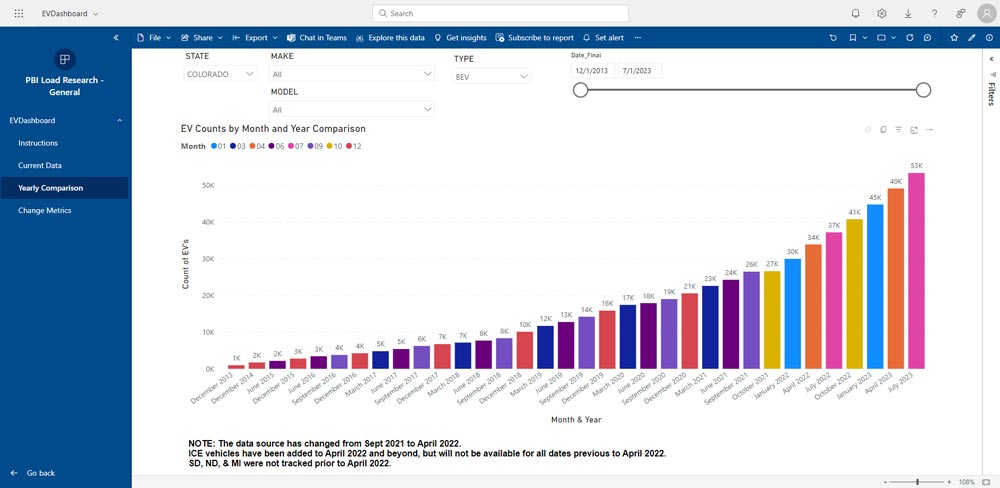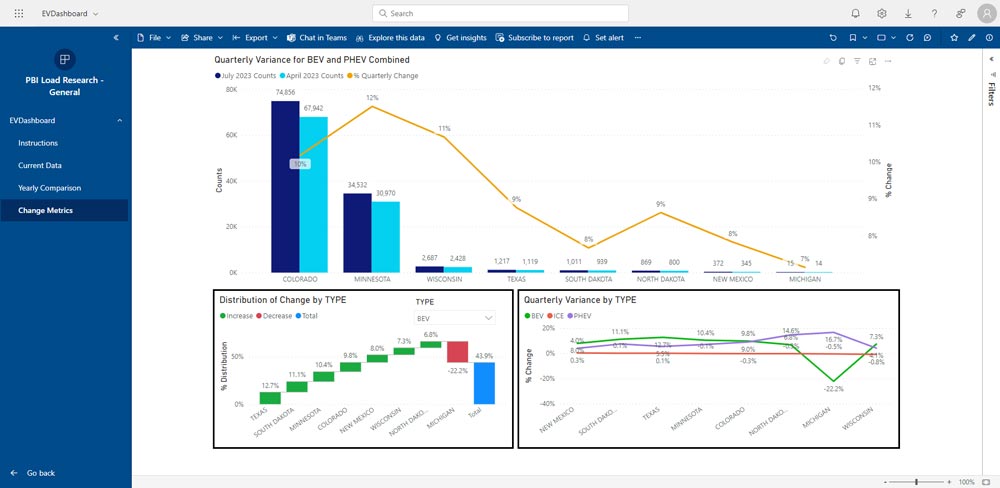Overview
The EV Engineering Insights Dashboard, developed using Power BI, was designed to provide engineers with a comprehensive understanding of the distribution of electric vehicles (EVs) within the Xcel Territory. The dashboard aimed to address the need for a system-wide, spatial view of the electric distribution system. The executive level dashboard initially presented an overwhelming amount of information across over 20 pages, lacking geographical representations. To enhance the technical aspects for hiring managers, the dashboard utilized Power BI's functionality, such as slicers for granular data views, and mapping features to visualize the geographic distribution of EVs.
The use of Power BI's features, including Power Query for data transformation, Power Pivot for in-memory analytics, and Power View for interactive data visualization, contributed to the technical depth of the project. The dashboard's technical sophistication lies in its ability to extract insights from complex EV adoption data, categorize vehicles based on model and make, and provide a comprehensive view of the evolving landscape of electric mobility.
In summary, the EV Engineering Insights Dashboard not only provided a simplified, spatial view of the electric distribution system for engineers but also demonstrated technical prowess through its use of Power BI's advanced features for data analysis and visualization.





